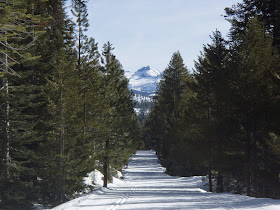Dale Matson
Click On Picture To Enlarge
My Campsite (11,300') Near Forester Pass in Kings Canyon National Park
If you don't know what “off the grid”, “bug out bag” and
“WSHF” mean, you are not a “Prepper”. Preppers are people who are training
themselves to be self reliant with survival skills if there is a natural or man-made
disaster.
Hurricanes Katrina and Sandy are good examples of what
happens when natural disasters can overwhelm infrastructure quickly leading to
chaos and lawlessness. Other natural disasters are earthquakes, tornadoes, and
floods. There is also the possibility of a massive epidemic or the loss of the
electric grid because of hackers.
People who live in rural areas expect power outages on a
regular basis and many have portable generators than can run their well pumps,
blower motors in their heaters and refrigerators. Most of their waste disposal
is on site and gravity operated.
I think it is reasonable to consider being prepared for the
possibility of some kind of disaster that could mean the loss of police and
fire services in addition to access to food, water and shelter. Many preppers
put a great deal of thought into self
defense and the thought that they must be prepared for at least a 72 hour
period of time where they are on their own to fend for themselves. Obviously
there are those who take their concerns much further and have hardened bunkers
built in secret locations and stocked with supplies for many months.
Survival skills are something everyone should have. For
example, there is no excuse for an able bodied adult not knowing how to swim. Very
few people have the survival skills of a Bear Grills or Les Stroud but anyone
who is familiar with camping has a start in self-reliance. Most individuals,
who camp, drive to campgrounds, where there are often potable water and
lavatory facilities. What they usually bring with them are tents, sleeping
bags, food, a portable stove and extra clothes. In a sense campers are already
preppers since they can live away from city services. The whole idea in dealing
with the elements is staying warm, dry,
hydrated and fed. You should also include, “defended” but it is not the
primary concern.
Let’s take this one step further. Those folks who are
backpackers can take everything they need to survive on their back in a
backpack. Multi Day backpackers are already survivalists. They have their food,
shelter, sleeping gear, clothing, light, a water filter or pills and protection
with them. Additionally, they are physically
fit, have navigational equipment and skills and can move through the
wilderness without trails. Their pack (bug out bag) is practical and manageable.
A 72-hour bag could be less than 40 liters. All they need to do is keep their
pack packed in their house and ready to go. They will need to make seasonal
adjustments with gear like a warmer sleeping bag in the winter.
My recommendation to those folks on YouTube who discuss the
contents of their bug out bags and include 15 or more pounds of ordnance is to spend a
couple of weeks backpacking in the wilderness. Use the trails at first and then
practice navigating off the trails. I think you may find that a good folding
knife, CCW permit and a handgun are enough ordnance.
More preparation than this is up to you but this is perhaps a place
to begin.

































